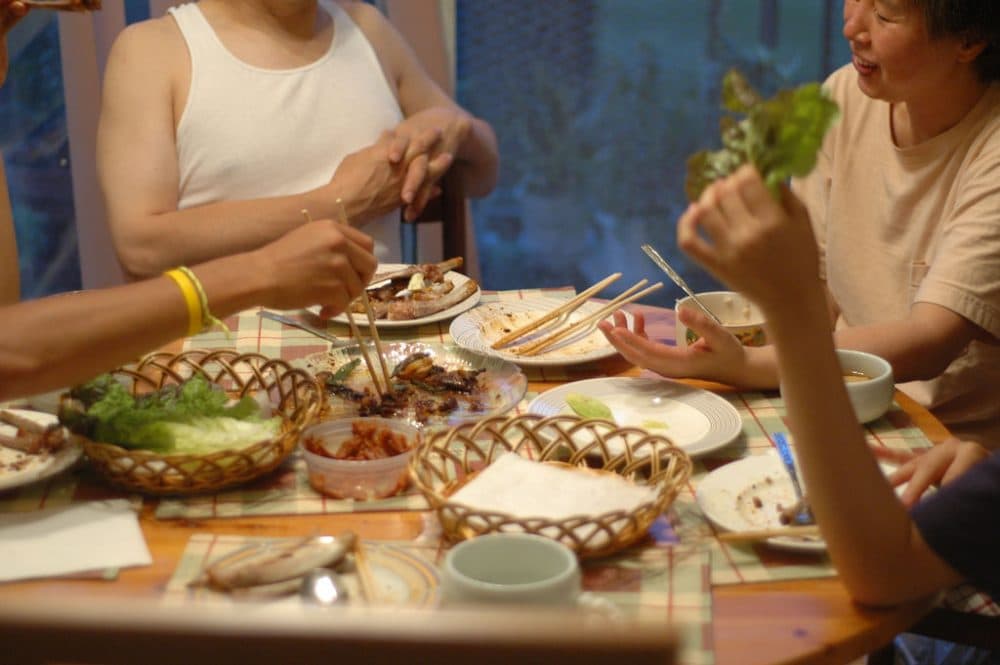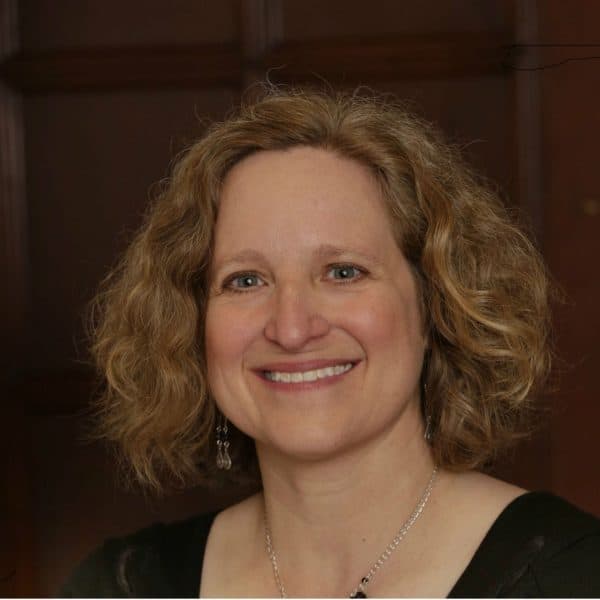Advertisement
COMMENTARY
Meeting The World Around My Mother's Table

Mom and I stood in a tiny kitchen in the town of Osuka, Japan, and stared at our host family, who smiled back at us. My mother and I spoke almost no Japanese. We had memorized phrases listening to a Japanese language CD. We could say hello, goodbye, thank you and delicious. But we had already greeted each other, and it was not yet meal time.
Mom was undaunted. She had taught English for a dozen years to foreign students. She started a game of Simon Says, and our host family, which included three children ranging in age from 9 to 12, played along.
“Simon says, touch your head,” she said. They copied her movements. Soon, we were all giggling, and over the next week, we taught each other words and phrases in our respective languages.
I became accustomed to meeting people from around the world because early on, Mom brought the world into our home at dinner time. The gatherings began when I was 12, after Mom began teaching foreign students English at Findlay College in northwest Ohio. We added extra leaves to our dining room table, and at least a dozen college students joined my family of five. They came from Saudi Arabia, Iran, China, Japan, Mexico, Greece and other countries. They were as diverse in religion as they were in nationality. For at least nine months a year, they gave our predominantly white and Christian town a diversity it lacked.
[A]s teens who spoke different languages, we did not talk of the changes looming in their country. We bonded over simple things.
When I was in high school, 90 high school students from Iran came to the college to learn English from Mom and other teachers. Mom invited me to tag along on field trips to a zoo and an amusement park. It was in the 1970s, before the Iranian revolution, before many of these students and their families would try to flee from their homeland. Most of them belonged to the Baha’i faith, and their religion made them a target in Iran. But as teens who spoke different languages, we did not talk of the changes looming in their country. We bonded over simple things.
By the time I was in my early 20s, my parents had moved to western New York state, just outside of Corning. Mom still found a new way to give her life international flavor. She became leader of a world pluralism club which connected women who had moved to the region from India, China, Japan, Egypt and numerous other countries. They met and made presentations to each other about global topics and had meals with food from different countries. Mom, because she was born in the United States, was an outlier.
I never knew what drew Mom to other cultures and countries. She died last August, so I must guess at the reason. Her father had immigrated to the United States from Russia when he was 9, and Mom grew up in Dorchester in a triple-decker with one set of Russian grandparents who spoke mostly Yiddish. She was a Jewish child in the 1940s and 1950s when Jews were often viewed as foreigners. She told me once how a boy left her in the middle of the dance floor at a high school mixer when he found out she was Jewish.
Mom grew up in Dorchester in a triple-decker with one set of Russian grandparents who spoke mostly Yiddish. She was a Jewish child in the 1940s and 1950s when Jews were often viewed as foreigners.
Maybe Mom saw herself as part of two worlds, like her friends who moved here from somewhere else or were also the children of immigrants. Mom would have been heartsick to hear of a young Indian engineer being shot and killed because the attacker felt he didn’t belong in America. She would have been equally devastated by the incident just a few weeks ago when a man reportedly shouted “Go back to your country” before shooting a Sikh man working on his car in the driveway. She saw America as a place for people from everywhere.
About three years ago, I joined a Boston-area chapter of the Daughters of Abraham, a book club of women from the Muslim, Christian and Jewish faiths. We meet monthly to discuss a book related to one of our faiths. The members include immigrants from Pakistan, Egypt and other countries. We have naturally become friends.
Mom taught me an invaluable lesson by example. Our world is far too small if we restrict encounters to people who come from the same backgrounds. Make efforts to know people different than you, dine together and talk, no matter how few words you can speak in the same language. If all else fails, try Simon Says.
